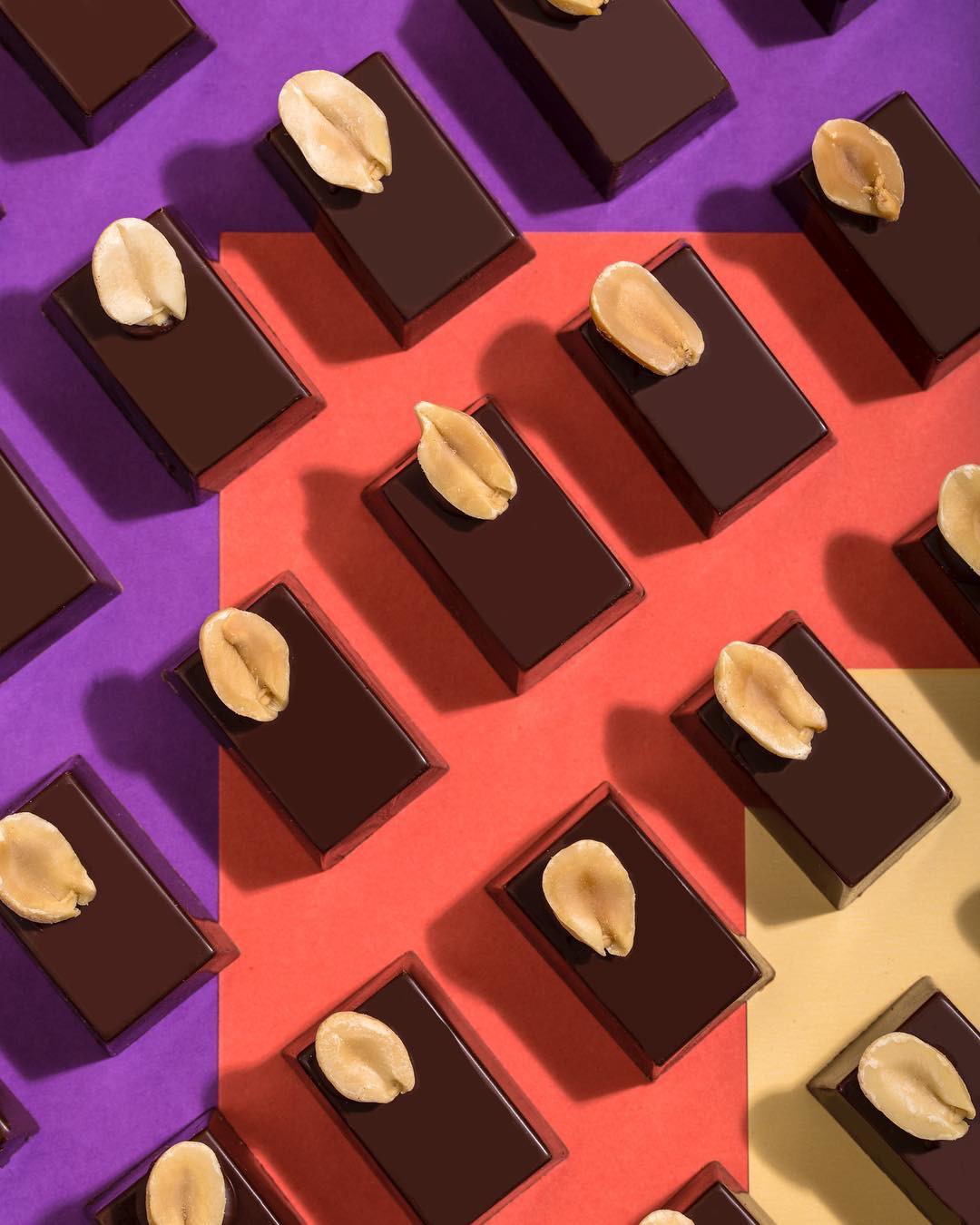Dark chocolate has a melting point just below that of your tongue, between 86 to 90 degrees. When it sits inside your mouth, at an average of 98.6 degrees, it can’t help but to melt –– releasing a world of flavor in its wake.
The flavor of a chocolate bar is based on hundreds of factors, from variety of cacao bean, climate, and soil to degree of fermentation, level of roast and the recipe. A long journey, and in this case, lineage, that shapes the characteristics of each morsel of chocolate, ground, sweetened, and then thoughtfully packaged, ready for consumption.
And yet the trail of trees, laborers, and cacao beans leading up to the euphoric experience of chocolate, with corporate giants like Hershey’s historically leading the way, has been largely in the dark. Which is why the fifth generation of Kahkow, an over 100-year-old cacao planting and producing company, with a one-month-old flagship factory in New York is here, stewarded by Nadia Rizek.
Rizek’s great-great-grandfather planted the seeds to this concept in 1905, when he immigrated from Palestine to the Dominican Republic (DR) in search of a better life, and finding cacao trees. Since then the family-owned plantations have grown to 25, including independently operated small farms.

In 2007 the Rizek family decided to try their hand at making chocolate, so they made a batch exclusive to locals in DR, and it was such a big hit, the family decided to open a store.
“We came to New York because it’s a global city,” Rizek told Bushwick Daily, “we wanted to share our creations with the rest of the world.”
Their first storefront is located in Williamsburg, Brooklyn. It reveals touches of the Old and New World: a warm island feel and sleek modern design both seamlessly working together to push the next frontier in chocolate.
To the left is their factory, a peak into their process which can be observed at different stages depending on the day of the week, anchored by a beautiful chestnut colored stone cacao grinder near the window. On the right is a decadent display of artisanal chocolates from all over the world with a corresponding sheet describing taste, origin, ingredients and dietary information.

Straight ahead, and impossible to miss, is the video wall, depicting images of the process and a live view of plantations in the Dominican Republic. All pieces of an extraordinary puzzle that promises to lift the veil of chocolate manufacturing from bean to bar, much like the third wave of specialty coffee, which prides itself on transparency, education, and ethical sourcing.
The cacao bean, or seed, is nestled inside a fruit called the cacao fruit. It grows on trees and bears seeds inside its pulp, its flavor comparable to mango or lychee. After it’s been picked, the seed along with the pulp become fermented, typically getting covered in banana leaves or placed inside wooden boxes. This process dictates the amount of acidity the cacao bean will impart. Next it is sundried, but carefully, to maintain the perfect amount of moisture.
At this point producers have a reddish-brown product, the raw cacao bean, ready to leave the plantation and head to the roaster. Kahkow sells bags of this in-store. In fact, they sell everything you need to make your own chocolate at home. Their store is stocked with raw beans, roasted and ground nibs, cocoa powder and cocoa butter. All you need to do is just add sugar.
Rizek believes in honoring the beans, saying, “one cacao bean does not represent an entire country, where there can be thousands of varieties from one country.”

Biting into a 70 percent single origin cacao chocolate bar from Kahkow is decadent, but not overbearing, it is void of white noise, letting the nuances sing. The flavors are distinguishable: there’s a high fruitiness that opens up as the bar melts, a tropical flavor akin to pineapple, all rounded out by a rich nuttiness. It’s the type of chocolate that forces one to stop and taste.
Kahkow’s Chocolatier, Damion Badalamenti, shared that working directly with the plantation opens up an endless well of potential. Excited, Badalamenti expressed one can create a host of different roasting profiles and be able to create a blend from one single origin bean, “bean to bar makes a world of possibility.”
Within their world of possibility they hope to host tastings, chocolate making workshops for adults and children, and to continue highlighting chocolates of the world on their wall-length shelf.
And back home, they hope to continue the work they began after hurricane George hit in 1998.

“Hurricane George was really disastrous for the Dominican Republic,” shared Rizek, which is why they started Fuparoca, an organization aimed to aid cacao plantations and its farmers in DR with technical assistance, assuring their growing practices are ethical and sustainable.
This century-long cacao legacy is committed to not only growing high quality beans, but to fostering and strengthening a morally pragmatic process from the ground up. As Rizek shared, it continues to nourish, “[the] close-knit relationships [we’ve had] for lots of years.”
Kahkow is a place to feel good about chocolate, a place to ask questions, and hopefully a place that will redefine the standard for chocolate factories everywhere.
Hours: Tuesday – Sunday, 10am to 7pm, Mondays closed.
Cover photo courtesy of Kahkow. All other photos by Andrea Aliseda.
For more news, sign up for Bushwick Daily’s newsletter.



